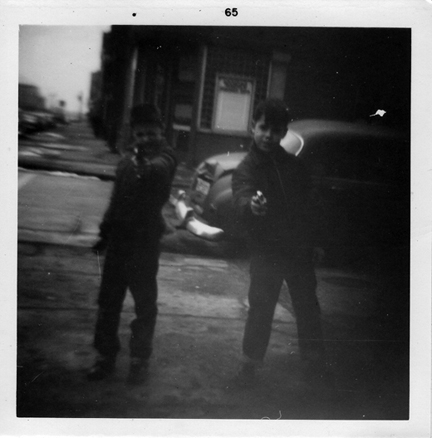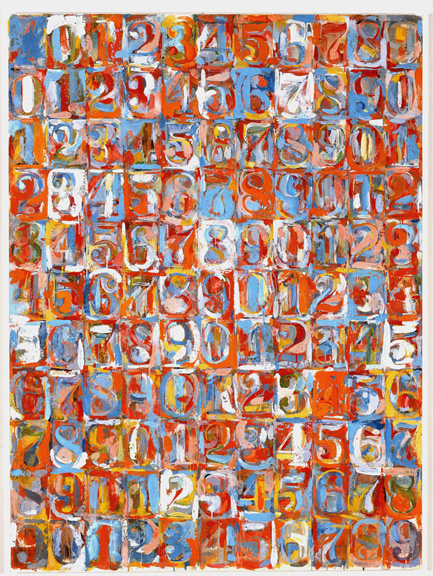The other day I was out in the woods pretending I was hunting for squirrels. The squirrels weren’t cooperating so it turned into a long walk, which is what was actually intended to begin with. I needed the walk.
I always have my camera with me. I have no clue what stops me to take a picture. Something in the shapes, colors or light. All I know is I have to take the picture. Digital cameras have been a godsend for this. If it doesn’t turn out, no big deal, no money was wasted on film, development or printing costs.
The other benefit is to not have to press the camera up against my face and peer through a tiny little hole. The screen or monitor or whatever you want to call it on the back of the camera suits me much better. I can move the camera around to get an angle or a view that otherwise would have required getting down on my knees or climbing up on something. Now I can just keep moving the camera around till the image on the little screen looks remotely interesting for some reason and press the button.
When I get it home and open it up, my usual first response is…why the hell did I take a picture of that?
There’s a good chance that the picture looks nothing like what I remember. I remember an intense blue sunrise sky. Shadows were much deeper. The light on the edges of trees and branches had more gold on them and stood out starkly against the intense blue of the sky. The forest floor had much more color to it, the browns and golds were richer.
I’ve been using Photoshop since it came out, so a little over 20 years. You would think I’d be an expert with it, but I use it more to manipulate images and not so much to manipulate colors. I have taught myself to make some color adjustments. Now, in about 10 seconds, I can come up with a picture that better suits what I thought I saw when I took the picture. Sometimes they look okay.
I always thought I should do more with the images and I have done some playing around with a few of them over the years. I’m never all that happy with the end result and most of them get deleted. I stick to enhancing colors and pretty much leave it at that.
My mother-in-law has been spending the holiday season doing rehab in a nursing home. While walking down a long hallway to pay her a visit, the walls had paintings hanging on them. All of them were landscapes, no real different than the pictures I take, only they were all done in oil paint. The brush strokes were somewhat loose, but not wild. Not quite as loose as most of the impressionist painters. They looked a lot like some of the images I had deleted over the years, my failed attempts at, something.
Again, it goes back to taking the original picture. What did I think I saw?
In my own head it’s a jumble. There are thousands of years of art history rummaging around between my ears; images, theory, colors, how it all balances. Countless hours spent in museums, galleries and wandering art shows adds to the noise. Long nights of drunken conversations with other artists makes matters worse.
Having grown up a city boy, this natural world is still a mystery at times.

The early art I did were what I referred to as my urban nightmares, whether paintings or photos. Moody, depressing, sometimes violent, a direct reflection of some of the shitty neighborhoods I lived in for the cheap rent. The bulk of my photography was all in black and white, I had my own dark room and never learned color.
And yet, my paintings were all intensely colored. At the end I was using mostly primary and secondary colors with very little mixing or shading. I was painting big, six foot by ten foot paintings. I was using house painting brushes rather than those little tiny artist brushes. My paint was mixed in coffee cans, sometimes thrown onto the canvas. My drawings from that time were also big. Lots of pastel blocks were used to make long sweeping swatches of color, rather than little daubs on paper.
One of my biggest influences at that time was Jasper Johns. I liked the loose paint application and the intense colors.
I’d put up some images of my work from back then, but I have nothing digitized. The drawings all reside with my daughters and all but one of the paintings have been destroyed. Some day I’ll have all the slides scanned.
Around 23 years ago after finishing a big painting that I thought was damn good, a switch was thrown. I stopped painting and drawing literally over night and never went back. Every now and then I’ll doodle something on a piece of paper, but I have no desire to take it any further. A random thought will come up now and then and I think I should try again, even my wife has mentioned I should consider it, but it goes nowhere.
I have no interest in sitting in a room with the stench of oil paint, turpentine and linseed oil saturating the air that I breath. Try that during the winter and wait for the heat to come on. It’s a miracle I’m not brain dead, but some would say that’s arguable. I have no interest in mounting layers of pastel dust collecting at my feet, embedding itself in my clothes, it’s just another thing to clean when I’m done.
Back to the images and trying to figure out what I’m looking at when I snap the picture…
I had three exceptional art instructors/mentors while at DePaul University. Since the school was small, there were only three of us that took art seriously while the rest wanted to be grammar school art teachers. Many of the hours of drunken conversation with fellow artists were with these three.
There own styles rub off on me…
William Conger for his intense color and structure. Click on his name and go to his site. Look for his earlier work, that’s what I remember.
Robert Donley for his color, structure and playful imagery.
Stephen Luecking (I couldn’t find much on his work) for his combination of math, science and the spiritual.
Now throw in my personal favorites:
Thomas Hart Benton One of my biggest influences and the same with Bill Conger.
Ed Paschke for his intense color. Before I knew who he was, I found out later we lived down the street from each other on a hooker and gang ridden street, and we both found it fascinating.
Then there’s the photographers that have influenced me, the list is too long.
I guess after looking at all of those artists it would help if you saw my old stuff, maybe, some day.
Overall it’s the color, the structure, the feel you get when looking at any of this work. The image is important, I guess, but what feeling did it elicit? Did you cock your head a bit and think for a second, not even knowing why or what is causing that to happen.
I guess that’s what I’m doing when I’m snapping pictures aimlessly while out in the woods. It does drive others nuts when they are with me. I’ll stop dead in my tracks and start two-stepping in different directions. Conversation with me at that point is pointless, I’m not listening. I’m not aware that you are even still around. I take the picture and pick up where I drifted off.
My wife will ask sarcastically, “did you get what you wanted?”
“Hell if I know, we’ll see.”
Luckily she has that same artist sensibility. I get a lot of leeway.
So, I played with this same image for awhile, not too long. The heat came on while I was working on it and no brain cells were killed by noxious fumes. I kind of like how it turned out and it went in with the few others that I won’t delete.
I still have no clue what the attraction is. No clue if it’s actually any good to anyone but me. But it stopped me in my tracks when I was out in the woods and every time I look at it, I cock my head just a bit.
___________
(On a creepy side note: I always noticed that when I was working on a painting or a drawing I would step back a bit and cock my head one way, then the other to get a bit of a different viewpoint. Many of the artists I know do this. In the 1978 movie Halloween, in one scene, the Michael Myers character picks up a kid and pegs him to a door with a butcher knife. He then steps back, staring at what he did and then cocks his head slowly one way, then the other. Every hair on my body stood on end when I saw that).


Larry Granat
30 Dec 2011I have the same thing happen to me, I take a picture, thinking, this is going to be great! Then I get home , look at it on the computer and wonder, what was I thinking? I’ve deleted so many of these pics. A few I’ve kept. I bought my camera back in 2006. I am still learning how to use it. I found this website on the net after I bought my camera while looking for info on how to use it. This guy is a little cocky, but he has great info on taking pictures. I have learned a lot from this site. But this may be stuff you have already learned. You can check it out here: http://www.kenrockwell.com/tech/fart.htm This link is a section on his site about taking photos. Thanks for this story, I really enjoyed it and this quote I can really relate to: “I guess that’s what I’m doing when I’m snapping pictures aimlessly while out in the woods. It does drive others nuts when they are with me. I’ll stop dead in my tracks and start two-stepping in different directions. Conversation with me at that point is pointless, I’m not listening. I’m not aware that you are even still around. I take the picture and pick up where I drifted off”. Thanks ,Ken and I want to see more of your pictures!
Ken G
30 Dec 2011Thanks Larry, I read the thing on FART, that’s pretty much what I do only I don’t think about it too much anymore. I think a lot of the decision making becomes subconscious. My friend Bob Long had something up on his site about this. I should go find it.
I’m going to go back and read the directions for my little point and shoot. It’s actually pretty sophisticated, I just never bothered reading.
The beauty of cheap big hard drives is that I don’t delete any of the originals. Sometimes I go back and find something interesting, even with the blurry ones.
I need to wander into your neighborhood. The eagle must be staying down the river a bit. Haven’t seen one in awhile. Unless they’re staying below the tree line.